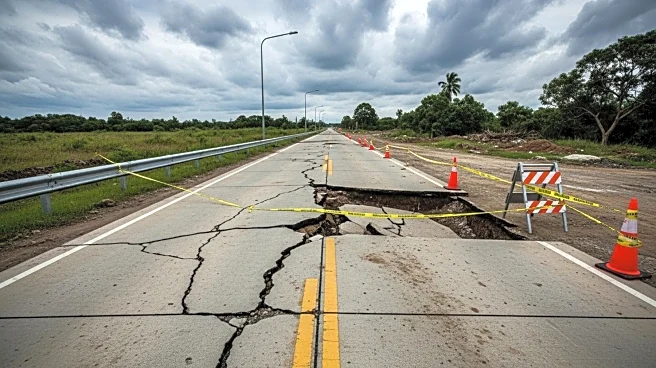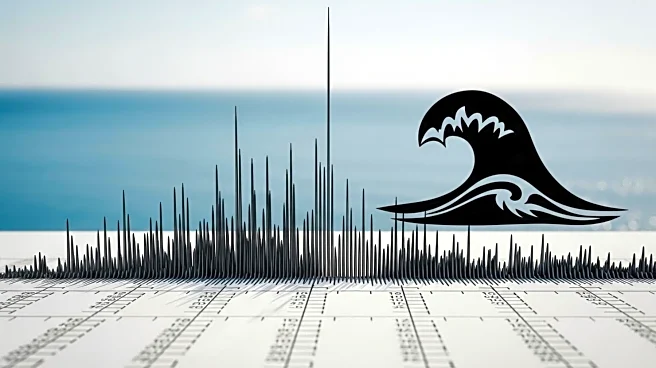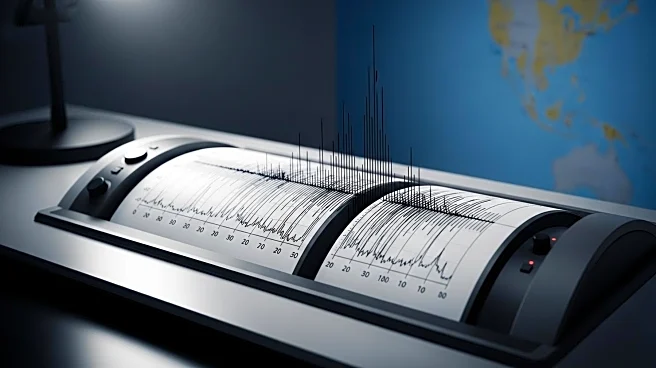What's Happening?
A powerful 7.4-magnitude earthquake struck near the southern Philippines on Friday morning, as reported by the U.S. Geological Survey. The epicenter was located 12 miles east of the coast of Mindanao and 80 miles east of Davao City, a major urban center with over 1.7 million residents. The earthquake triggered tsunami warnings for the Philippines, Indonesia, and Palau, although these warnings were lifted within a few hours. Local authorities, including Nelson Dayanghirang Sr., governor of Davao Oriental province, confirmed two fatalities. In response, the Davao City government suspended school classes to assess infrastructure damage. President Ferdinand Marcos Jr. stated that the government is actively assessing the situation to ensure public safety. The U.S. Pacific Tsunami Warning Center initially forecasted hazardous tsunami waves but later declared the threat had passed. Aftershocks of up to 5.6 magnitude were reported by the Philippine Institute of Volcanology and Seismology.
Why It's Important?
The earthquake highlights the vulnerability of the Philippines, which is situated along the Ring of Fire, a region known for high seismic activity. The event underscores the need for robust disaster preparedness and response strategies in the region. The immediate impact includes potential disruptions to local infrastructure and the economy, particularly in Davao City, a key urban area. The suspension of classes and the rapid damage assessments indicate proactive measures by local authorities to mitigate risks. The broader implications involve the necessity for international cooperation in disaster response, as evidenced by the involvement of the U.S. Geological Survey and the Pacific Tsunami Warning Center. The earthquake also serves as a reminder of the ongoing challenges faced by countries in seismically active zones.
What's Next?
Authorities in the Philippines are expected to continue assessing the damage and providing aid to affected areas. The government may implement further safety measures and infrastructure checks to prevent future casualties. International aid and support could be mobilized to assist in recovery efforts. The event may prompt discussions on improving earthquake preparedness and response strategies, both locally and internationally. Monitoring for additional aftershocks will be crucial to ensure public safety and minimize further damage.
Beyond the Headlines
The earthquake could lead to long-term shifts in public policy regarding disaster management and infrastructure resilience in the Philippines. It may also influence regional cooperation among countries in the Pacific Ring of Fire to enhance collective disaster response capabilities. The event highlights ethical considerations in disaster reporting and the importance of accurate information dissemination to prevent panic and ensure effective response.











